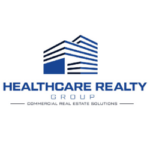The United States is undergoing a dramatic demographic shift as the Baby Boomer generation enters their golden years. By 2030, all Baby Boomers will be over age 65, expanding the size of the older population so that 1 in every 5 Americans will be of retirement age, according to the U.S. Census Bureau.
This “graying of America” is poised to have far-reaching impacts across society, not least of which is an increased demand for healthcare services and facilities. As a result, the need for healthcare real estate – including medical office buildings, hospitals, assisted living facilities, and skilled nursing homes – is projected to grow substantially in the coming years.
The Surge in Older Americans
Baby Boomers, those born between 1946 and 1964, number around 73 million and comprise nearly 20% of the total U.S. population. As this large cohort ages, the number of older Americans is expected to balloon. The Population Reference Bureau estimates that the number of Americans ages 65 and older will nearly double from 52 million in 2018 to 95 million by 2060, rising from 16% to 23% of the total population.
This demographic shift is being driven not only by the aging of the baby boom generation but also by increasing longevity. Life expectancy in the U.S. has risen from age 68 in 1950 to age 78.6 in 2017, thanks to advancements in medicine and sanitation. Today, a person who turns 65 can expect to live nearly 20 more years on average.
Increasing Healthcare Utilization Among Older Adults
An aging population means greater demand for healthcare services, as older adults typically require more medical care than younger people. According to the Centers for Disease Control (CDC), over 60% of adults age 65+ have at least one chronic condition, such as heart disease, cancer, diabetes or arthritis, and 40% have two or more.
Older Americans account for a disproportionate share of healthcare spending. Despite representing only 16% of the population, adults age 65 and older account for 36% of all U.S. healthcare costs, according to the Kaiser Family Foundation. The average annual per-person healthcare spending is nearly $11,000 for people aged 65-84, over triple the amount spent on working-age individuals.
This increased utilization of medical services will put pressure on the existing healthcare infrastructure. As the population continues to age and chronic disease incidence rises, there will be increased demand across many sites of care. Outpatient volume is projected to increase 16% by 2032 according to the American Hospital Association.
Implications for Healthcare Real Estate
The wave of aging Baby Boomers and their heightened healthcare needs will necessitate an expansion of healthcare facilities across the continuum of care. More medical office buildings will be needed for outpatient visits with doctors. Hospitals will require renovations and new construction to meet inpatient demand. Assisted living centers, nursing homes and hospice facilities will see a surge in occupancy to care for those no longer able to live independently.
This is creating opportunities for healthcare real estate investors, developers, owners and operators. Total investment in MOBs reached a record $17.4 billion in 2021, up from $11.9 billion in 2020, fueled by the trend of seniors aging at home.
Challenges in Expanding the Healthcare Property Supply
One major issue is the rising cost of construction. Building new healthcare properties has become more expensive in recent years due to escalating prices for materials, labor shortages in the construction industry, and supply chain disruptions. This makes the financial feasibility of new development more difficult.
Another challenge is the limited supply of land parcels suitable for healthcare projects, particularly in densely populated urban and suburban markets. Developers often have to compete against other property types, such as multifamily and retail, for the best locations close to hospitals, medical centers, and affluent populations.
Positive Outlooks for Healthcare Real Estate
Despite the challenges, there are many reasons to be optimistic about the future of healthcare real estate. The sector has shown remarkable resilience in the face of economic uncertainty and market volatility. Even during the COVID-19 pandemic, healthcare properties maintained relatively high occupancy levels and rent collections compared to other commercial real estate asset classes.
The long-term fundamentals of healthcare real estate remain strong. The aging of the population is a demographic trend that will persist for decades, providing a reliable and growing source of demand for medical facilities. As Baby Boomers age and require more care, the need for healthcare properties will only increase.
Additionally, healthcare real estate has historically provided stable and attractive returns for investors. The specialized nature of healthcare facilities and the essential services they provide can make them less vulnerable to economic downturns than other property types.
The healthcare industry is also adapting to changing consumer preferences and technologies in ways that are creating new real estate opportunities. The rise of telehealth, for example, is driving demand for specialized spaces equipped for virtual consultations. The growing emphasis on outpatient care is boosting the need for medical office buildings and ambulatory surgery centers. The desire for more convenient and accessible care is fueling growth in urgent care clinics and retail health locations.
Many health systems are looking to real estate as a strategic tool to enhance their competitive position, improve the patient experience, and generate new revenue streams. Sale-leaseback transactions, where health systems sell their properties to investors and then lease them back, are becoming more common as a way for providers to unlock capital for other priorities. Joint venture partnerships between health systems and real estate firms are also on the rise, aligning interests and sharing risk. Joint ventures can help meet patient demand for convenient, customized service and address compressed margins, with 97% of health system leaders open to partnerships in areas like outpatient surgery, urgent care, and at-home care.
While there are challenges to overcome, the future looks bright for healthcare real estate. The powerful demographic trends, essential nature of healthcare services, and innovative spirit of the industry all bode well for the sector’s long-term growth and prosperity. With the right expertise and strategic approach, healthcare real estate stakeholders can successfully navigate the challenges and seize the opportunities of this dynamic market.
Next Steps for Healthcare Real Estate Investors and Providers
As the U.S. population ages and healthcare real estate demand surges, it’s critical to have an experienced and knowledgeable partner to guide you through the complexities of this specialized sector. Healthcare Realty Group is a leading healthcare real estate services firm with a proven track record of success in helping clients navigate the unique challenges and opportunities of medical properties.
Whether you’re a real estate investor evaluating potential acquisitions, a health system planning a new development, a physician group looking to lease space, or a property owner seeking to monetize your asset, HC Realty Group has the expertise and relationships to help you achieve your goals.
In this time of rapid change and growing demand in healthcare real estate, having a trusted and skilled partner is more important than ever. Contact HC Realty Group today to learn how we can help you seize the opportunities and overcome the challenges in this dynamic market. Visit our website at www.hcrealtygroup.com or call us at (813) 397-1444.





